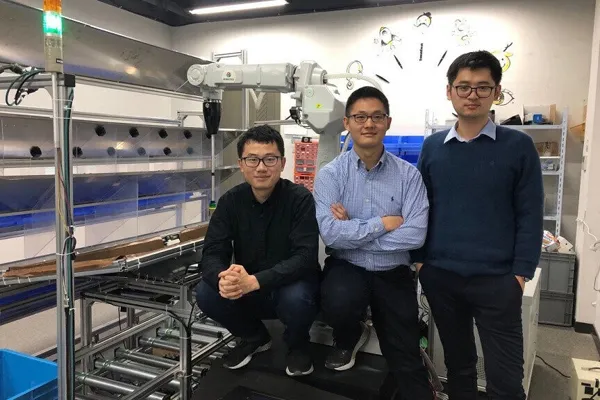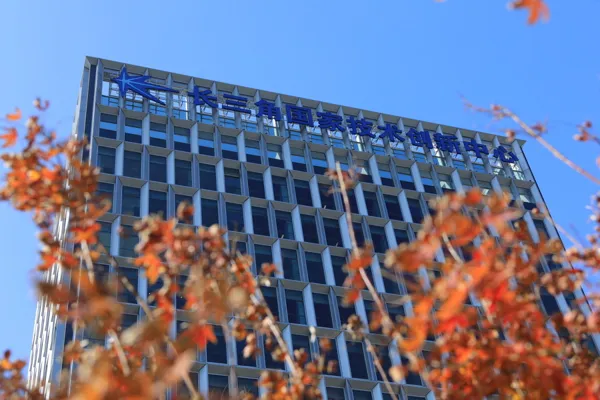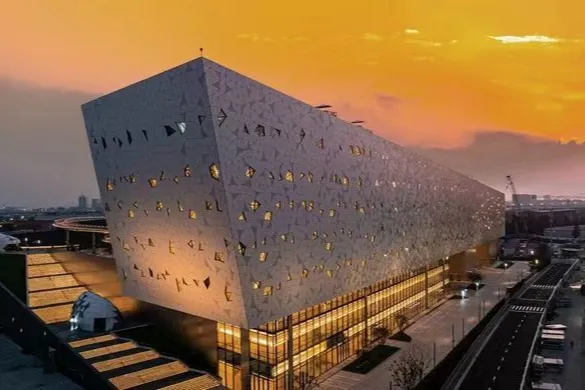What is so "special" about Shanghai's first basic research zone? Let’s start with the dried and wrinkled passion fruit.
Hawking once proposed an idea to develop an aircraft with a light sail, which would be accelerated by a laser and fly to the "hometown of Trisolarans" - Alpha Centauri, to explore whether it is suitable for human survival.
Looking at a box of dried and wrinkled passion fruits, Xu Fan, a professor at the Department of Aeronautics and Astronautics at Fudan University, suddenly had an idea: Can a model be used to predict and control the wrinkles of the cosmic light sail film? Otherwise, the direction of laser reflection will cause irregular changes, causing the aircraft to deviate from the route.
Even Xu Fan himself felt that it would be difficult to apply for scientific research funding for this idea, so he kept it buried in his mind for five years. Until two years ago, Shanghai took the lead in piloting the "Basic Research Special Zone" in the country. He tried to apply, but to his surprise, not only was he selected, but he also received the largest single funding since he started doing scientific research.
Why are seemingly fanciful ideas so popular? What is the "specialness" of the Basic Research Zone?
[No limits, encourage brave exploration of scientific "no man's land"]
At present, the scientific research paradigm is undergoing profound changes, and international scientific and technological competition is moving towards the basic frontier. It is urgent for us to strengthen basic research and solve key technical problems from the source and bottom.
Shanghai's Basic Research Special Zone came into being. The first three "special zones" were established at Fudan University, Shanghai Jiao Tong University, and the Shanghai Branch of the Chinese Academy of Sciences. With a five-year cycle, the Municipal Science and Technology Commission invested 20 million yuan in each special zone every year, and the three units invested no less than 1: 1 of the funding ratio is jointly invested.
In order to allow scientific researchers to focus on cutting-edge exploration, the funding investment in the basic research special zone can be described as "generous". A scientist who was selected into the special zone said that in the past, "the money you spent on oil and salt could not be used to buy sauce and vinegar." Now there is no need to list detailed budgets, and scientific research plans can be adjusted at any time.
In addition to using funds independently, students are also free to choose topics and organize scientific research on their own. A head of the basic research department of a university lamented that this is the first time that a local government has directly given the power to initiate basic research projects to a special zone. Scientists are not required to outline a detailed research roadmap, but only need to report on scientific research progress every year. Such tolerance is almost non-existent in current projects.
"Four unlike", this is a senior scientist's evaluation of the research direction of Wang Rong, a young researcher in the Department of Environmental Science and Engineering of Fudan University. Different from traditional atmospheric research, he integrates atmospheric physics, chemistry, economics and computer simulation. In 4 years, he has not applied for a competitive scientific research project, and some projects did not even have the opportunity to defend.
For this non-consensus innovative research, the Basic Research Zone has "open arms" and tolerates failure. As long as the original records prove that the project team has fulfilled its obligations of diligence and responsibility, the project is allowed to be closed.
Setting no restrictions and encouraging brave exploration into the "no man's land" of science is the original intention of establishing the basic research special zone.
[We are currently studying and formulating version 2.0 of the "Basic Research Special Zone"]
In May this year, Shanghai’s “Basic Research Zone” was pilot expanded to include Tongji University, East China Normal University and East China University of Science and Technology. When selecting projects, each special zone focuses on "people's innovative potential" and explores the establishment of a quality, performance, and capability-oriented project management and evaluation system. Shanghai Jiao Tong University uses the "125 Scientific Questions" published by Science magazine as an example to promote cross-field and interdisciplinary research; the Shanghai Branch of the Chinese Academy of Sciences provides additional support to the top 20% of teams in the mid-term evaluation; East China Normal University's African Consensus Project We will consider them individually and adopt "step-by-step" flexible funding support.
Song Yang, director of the Basic Research Division of the Municipal Science and Technology Commission, said that the Municipal Science and Technology Commission is studying and formulating the 2.0 version of the "Basic Research Special Zone" policy, which will focus more on basic disciplines and strategic directions, and will not be limited to project funding support. It will also focus on talent introduction, Policies in line with the laws of basic research will be formed in terms of evaluation and assessment.
The pilot establishment of a "basic research special zone" is only one of Shanghai's 20 key measures to accelerate the high-quality development of basic research. In 2021, Shanghai's total social investment in basic research reached 17.773 billion yuan, accounting for nearly 10% of R&D investment, nearly double that of five years ago. The number of highly cited scientists engaged in scientific research in Shanghai increased from 47 in 2019 to 117 in 2022, accounting for 8.5% of the country.
In October last year, inspired by the wrinkles of passion fruit, Xu Fan's research team and collaborators developed a wrinkle-shaped smart soft gripper that can be used to clean up tiny garbage particles in space. The result, published as a cover article in Nature Computational Science, is actually just a derivative of basic research and has potential value for transformation and application.
The results of Xu Fan and others were published as a cover article in "Nature Computational Science"
The results of basic research are difficult to plan and cannot be rushed. But one thing is for sure, waiting for the flowers to bloom requires thick fertile soil first.




